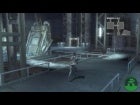At the end of the Lost Odyssey session at this year's Game Developers Conference, presenter Ray Nakazato apologized. The title of the session had been "Looking Back at Lost Odyssey -- The Challenge of Cross-Cultural Development," but Nakazato had hardly touched upon that topic. Instead, the President of FeelPlus inc. spent the hour giving one of the best, most clear presentations we've seen at this year's GDC. Instead of "The Challenge of Cross-Cultural Development," the title of this session could have been "The Challenge of Developing a Triple A Title." We're going to present virtually all of what Mr. Nakazato presented to us, so while the next few pages might be a bit dense, they're well worth the read. This was one of the best, most honest, post-mortems we've seen on any game.
The Good, The Bad, and the Presenter
Lost Odyssey, Nakazato says, was begun in 2004. In 2005, the small team passed the work onto FeelPlus. FeelPlus was initially composed of Microsoft employees, but eventually the company was phased into being its own entity. Showing us a slide of the game's development, Nakazato notes the milestones of both the Japan-only public, playable demo and the Unreal Engine 3 integrations -- all four of them. The demo shouldn't have been released as it was, he says, because the game was not "fully mature." This seems to relate to the frequent UE3 integrations.
FeelPlus, he continues, was built around three teams: the design group, the production group, and the art group. There was also the project manager group, but that peaked at three people, and the Microsoft Mistwalker coordinator. The team began with about ten people, but for the ten months of peak employee levels, the head count was closer to 150. From here, Nakazato shakes off the soft stuff and dives into each section of Lost Odyssey and how FeelPlus handled it.
Game Design: FeelPlus did well with the game system, going with a traditional JRPG system to play to the veteran-rich team's strengths. Storytelling was also good, with a strong "synergy between [the] game story and [the] 1000-year dreams." On the other hand, FeelPlus did poorly with its timing. The project was started too early, so game designers had to deal with many unknowns.
"We started with a big group of people before we even had the platform." This mirrors an issue we heard from Star Wars: The Force Unleashed Project Lead Haden Blackman at GDC this year. It seems like developing for next-gen without dev kits or a working console is exactly as hard as you'd imagine. In addition, the battles, adventure, and cut-scene elements were three separately created components, causing some problems as the team tried to integrate them.
Art Production: Nakazato identified character and creature production as the real winner here, since the creation of the content on time gave the team plenty of time to get the details just right. On the other hand, environment production was mishandled. With over 300 locations, some level of prioritizing should have been done; instead, each environment was given equal money and time. We thought that the Queen's chambers were a great example of an environment that clearly had attention lavished on it, despite it being a momentary stop. In addition, Nakazato mentioned that too much money and time was spent on incredibly detailed and voluminous concept art; they could have used much less and spent that money elsewhere.





